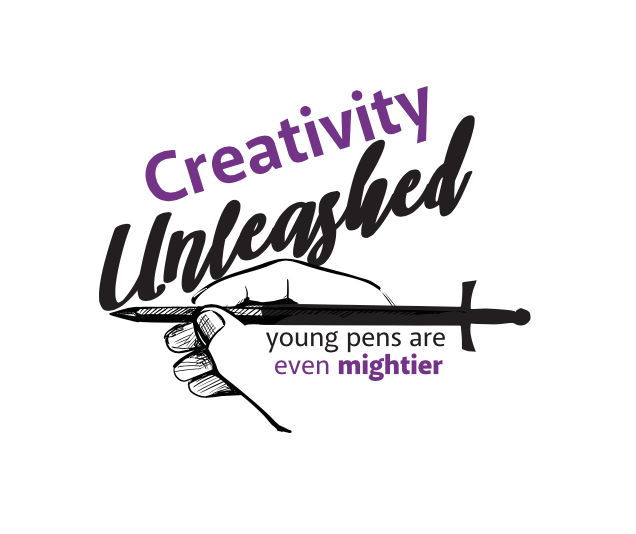How Can Technology Support Young People’s Mental Health and Wellbeing?
How Can Technology Support Young People's Mental Health and Wellbeing?
By Kay Budka-Fox
Cyberpsychology, an increasingly prevalent field of psychological study, works to examine how we interact with others using technology, the ways in which it impacts our behaviour, the adaptations necessary for technology to suit our needs, and how the psychological states of humankind are affected by varying technologies (Connolly et al., 2016). The advancement in technology is one that has drastically changed the way in which the mental health and wellbeing of young people is recognised, diagnosed, spoken about and treated. Technology as a set of tools, equipment and methods used to solve problems and achieve specific goals is increasingly utilised in the psychological field, and one that is multifaceted (Harvey et al., 2022). This essay, through discussion of both the advantages and disadvantages, aims to elucidate the ways in which technology can support young people’s mental health and wellbeing.
The Role of Technology in the Support of Young People
The melding of technology and the treatment of mental health has provided a platform of accessibility and inclusivity for young people, who may not have otherwise experienced this. AI is a powerful tool, and one that is becoming utilised in psychotherapeutic settings. Specifically, AI has offered support in diagnostic and therapeutic areas of medicine that were previously offered solely by trained healthcare professionals (Holohan and Fiske, 2021). AI as a therapeutic tool now has the potential to act as a counsellor, and it may be expected to accomplish this capability successfully in the coming years. One way in which this may occur is through the assistance of providing data-driven insight to both counsellors and their patients, as well as offering additional resources for the betterment of counselling services in general (Mohammed Bala Hashidu, 2024). Furthermore, it has been found that through cyberspace, users tend to become more open, feel less restrained, and feel more safe in expressing themselves in comparison to face-to-face environments (Suler, 2004). This appears to be contributing to the nurturing of the positive coalition between technology and the support of young people (Bolton, 2017), with 59% of people feeling more able to talk about their mental health in this way (Suler, 2004). Technology has offered a wealth of users a level of control and empowerment over their mental wellbeing, and it can be hopefully assumed that this will only continue to develop.
Anonymity and Accessibility
One of the most exceptional benefits of technology’s presence in the realm of mental health services is the ability to provide an anonymous, geographically flexible platform. Online counselling receives considerable commendation for its global obtainability. This encompasses anyone with access to the internet; those in geographically remote or isolated areas, with physical limitations, social phobias, or simply those with hesitant feelings towards face-to-face counselling (Teh et al., 2014). More specifically, you people have found anonymity to be of great reward in engaging with online counselling services (e.g “kooth.com”), encouraging this engagement and reducing levels of stigma around the counselling process. It provides a safe distance between both the counsellor and patients, subsequently permitting patients to feel less defensive, pressured and uncomfortable in discussing their mental health. Often cited as the main drawback of online counselling, the inevitable loss of non-verbal communication that comes with anonymity is counterbalanced by the advantages it oers in conjunction (Teh et al., 2014). Joseph Walther’s ‘Hyperpersonal Model’ (1996) suggests that while interacting with online services, users become more personable more quickly through asynchronous communication, which inadvertently relies on anonymity, too. The capability of editing, discretion, convenience and the refinement of environmental distractions through this model allow the re-allocation of cognitive resources in order to further enhance the counselling process (Walther, 2007). Appearance, environmental distraction and non-verbal communication have potential to disrupt the curation of an intimate therapeutic relationship between counsellor and client, all of which are devoid through the use of technology in these practices (Walther, 2007).
Drawbacks of the Technological Support System
Despite the numerous advantages of technology as an instrument in the support of young people’s mental health and wellbeing, it would be inconceivable to not consider the disadvantageous attributes that are concurrently present. One of the greater risks that is likely to be encountered is the miscommunication and successive misunderstanding that may arise in the absence of non-verbal cues. Traditional face-to-face counselling, as well as a more successful therapeutic relationship, is dependent on factors such as tone of voice, facial expression, body language, eye contact and even silences to communicate feelings and information outside of the capability of words, and result in the strengthening of this relationship. This may also have greater implications, such as the potential for inaccurate diagnostic assessment, and therefore inaccurate treatment of young people in regard to their mental health (Bolton, 2017). This risk of misdiagnosis is also ubiquitous in the wider realm of technology; 20% of young people, from 2005-2010, had experienced a mental health problem, and 30.8% of these people reported having searched the internet seeking diagnostic criteria and information (Burns, 2010). Moreover, young people are more engaged with digital technologies in general than ever before (Montague et al., 2015), therefore amplifying both this risk, as well as those of personal safety risks (such as breaches in confidentiality as a result of unauthorised access to information or an error in t transmission of correspondence), and privacy concerns. Not all platforms are professionally moderated either - another drawback that should be considered in regard to the acceptance of technology as a tool for support (Bolton, 2017).
Interventions Provided Solely Through Technology
The rise of technology and technological advancement has provided a strong foundation on which beneficial, self-empowering facilities can be provided to a large range of people, simultaneously. Online services such as “kooth.com”, “giveusashout.org” and “mermaidsuk.org.uk” exist exclusively as technological services through which support is offered and tailored towards young people and their mental health. In addition, virtual and augmented reality have been proposed as potential vessels through which intervention can be provided, such as exposure therapies, further broadening the scope of technological capability. Patients would be able to enter safe, ecological and ethical simulations that closely approximate settings in which problematic behaviours usually occur, such as eating disorders or phobias. VR and augmented reality allow for rich multisensory stimulation to be provided and individualised for each patient, and the inclusion of such intervention under the umbrella of technological support has been proven effective across the board (Riva et al., 2021). Social media also renders the potential to allow young people access to communities, through means such as forums and peer groups, permitting support to be received from those in similar situations. Peer support includes a system of mutual benefit where individuals who have experienced the adversity of mental illness can offer hope, companionship and encouragement to young people in similar positions. Social media, as a means of intervention, may be distinguished as a non-threatening medium that can be accessed within the safety of one's own home (Naslund et al,. 2014). Online therapy, counselling and technological support in general has surged in popularity, and ameliorated the support available to young people in regard to their mental health and wellbeing (The Retreat Clinics, 2022).
Conclusion
The impact of and future potential of cyberpsychology, technology and its application to mental health services and the mental health of young people is impossible to disregard.
As technology develops, it becomes increasingly sophisticated, accessible and influential, meaning that its impact on the mental health and wellbeing of young people does too. It is crucial that psychologists, counsellors and professionals contribute guidance and knowledge to the betterment of these services through expertise such as research and the understanding of various fields. It can be unmistakably seen that technology has played a role in influencing the mental health and wellbeing of you people, however many of the vessels through which this has been provided have not been professionally evaluated or researched to an adequate extent. It is vital for both professional and user input to be provided in order to ensure a positive, fruitful impact on the mental health and wellbeing of young people, through the endless possibility and utilisation of technological support.
References
- Bolton, J. (2017). The Ethical Issues which must be addressed in online counselling. [online] Available at: https://www.acrjournal.com.au/resources/assets/journals/Volume-11-Issue-1-2 017/Volume-11-Issue-1-2017-FULL.pdf.
- Burns, J.M., Davenport, T.A., Durkin, L.A., Luscombe, G.M. and Hickie, I.B., 2010. The internet as a setting for mental health service utilisation by young people. Medical Journal of Australia, 192, pp.S22-S26.
- Connolly, I., Palmer, M., Barton, H. and Kirwan, G. (2016). An introduction to cyberpsychology. New York: Routledge.
- Harvey, P.D., Depp, C.A., Rizzo, A.A., Strauss, G.P., Spelber, D., Carpenter, L.L., Kalin, N.H., Krystal, J.H., McDonald, W.M., Nemero, C.B. and Rodriguez, C.I., 2022. Technology and mental health: state of the art for assessment and treatment. American Journal of Psychiatry, 179(12), pp.897-914.
- Holohan, M. and Fiske, A. (2021). ‘Like I’m Talking to a Real Person’: Exploring the Meaning of Transference for the Use and Design of AI-Based Applications in Psychotherapy. Frontiers in Psychology, 12. doi:https://doi.org/10.3389/fpsyg.2021.720476.
- Mohammed Bala Hashidu (2024). Collaboration between Human and AI in Counselling. BICC Proceedings, [online] 2, pp.226–231. Available at: https://biccproceedings.org/index.php/bicc/article/view/132#:~:text=The%20stu dy%20emphasizes%20the%20importance [Accessed 28 Sep. 2024].
- Montague, A.E., Varcin, K.J., Simmons, M.B. and Parker, A.G. (2015). Putting Technology Into Youth Mental Health Practice. SAGE Open, [online] 5(2), p.215824401558101. doi:https://doi.org/10.1177/2158244015581019.
- Naslund, J.A., Grande, S.W., Aschbrenner, K.A. and Elwyn, G. (2014). Naturally Occurring Peer Support through Social Media: The Experiences of Individuals with
How Can Technology Support Young People’s Mental Health and Wellbeing?
- Severe Mental Illness Using YouTube. PLoS ONE, [online] 9(10),
p.e110171. doi:https://doi.org/10.1371/journal.pone.0110171.
- Riva, G., Malighetti, C. and Serino, S., 2021. Virtual reality in the treatment of eating disorders. Clinical psychology & psychotherapy, 28(3), pp.477-488.
- Suler, J. (2004). The Online Disinhibition Eect. CyberPsychology & Behavior, [online] 7(3), pp.321–326. doi:https://doi.org/10.1089/1094931041291295.
- Teh, L., Acosta, A., Regina, M., Hechanova, M., Garabiles, M. and Alianan, A. (2014). Attitudes of Psychology Graduate Students Toward Face-to-Face and Online Counseling. Journal of psyChology, [online] 47(2), p.4265905. Available at:https://www.pap.ph/file/pjp/pjp2014-47-2-pp65-97-tehacostahechanovag abilesalianan-attitudes_of_psychology_graduate_students_t.pdf.
- The Retreat Clinics. (2022). The Benefits of Online Therapy — The Retreat Clinic [online] Available at: https://theretreatclinics.org.uk/3571-2/ [Accessed 28 Sep. 2024].
- Walther, J.B., 2007. Selective self-presentation in computer-mediated communication: Hyperpersonal dimensions of technology, language, and cognition. Computers in human behavior, 23(5), pp.2538-2557.



